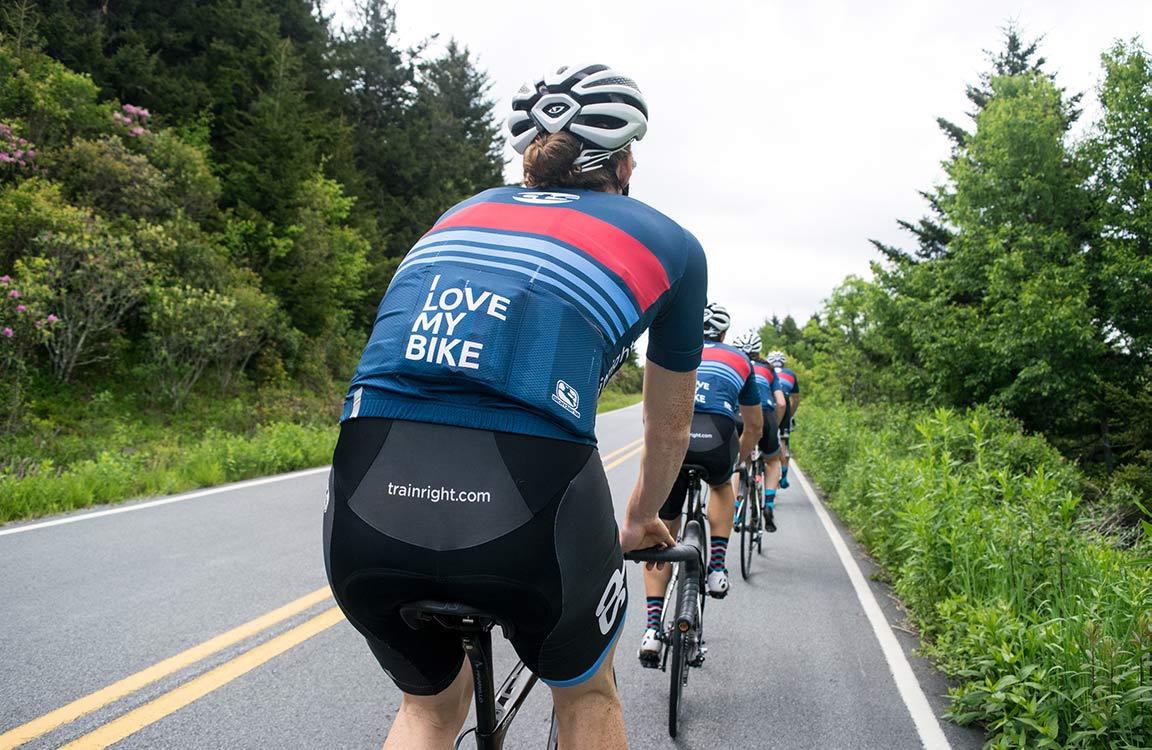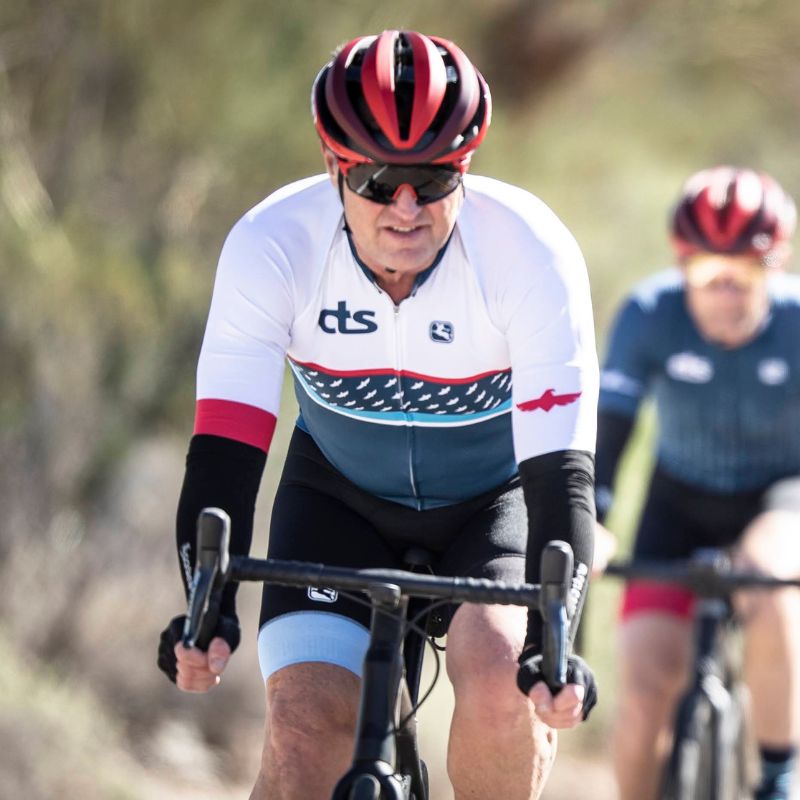
Pandemic-Proof Your Summer Training
By Chris Carmichael,
Founder and Head Coach of CTS
Athletes are eager to train but don’t want to waste their time getting prepared for goals that might get cancelled. While I would argue improving fitness and performance is never a waste of time, I also recognize people need tangible milestones to keep them moving forward. Here are some ideas of what the next few months might look like and examples of ways my coaches and I have been helping athletes create pandemic-proof plans for this summer.
Best Guesses for Summer 2020
It’s hard to make strong predictions about what the summer of 2020 will look like in terms of travel, events, and group activities. The vast majority of summer endurance events have been cancelled or postponed until either fall or 2021. At the same time, many areas of the country are reopening, people are getting out more, and according to a USA Cycling survey released earlier this week, if events restart then about two-thirds of respondents either plan to attend events already on their schedules or are open to adding new events that weren’t on their calendars.
Having spent a lot of time talking with coaches, event promoters, outdoor industry executives, and physicians, my best guesses for this summer go something like this: Endurance events could start coming back, slowly and with smaller numbers. Survey data released this week from Destination Analysts indicates people are eager to travel and will go to a destination based on their confidence in that destination’s COVID response and ongoing preparedness plans. Travel is likely to be more regional, within driving distance, and mass gatherings like concerts are unlikely to resume this summer. Outbreaks and localized lockdowns seem possible into the fall, at least. Summer programs for kids are likely to be quite limited, meaning more working parents will have kids at home this summer.
Pandemic-Proof Your Summer Plans
Set tangible one- or two-month goals
Somewhere between the spontaneous challenge goals like Everesting or Backyard Ultras and the open-ended self-improvement goals that have predominated social media over the past two months, there are measurable and meaningful performance goals you can achieve within 1-2 months. If you want to work on climbing, set the goal of going 1 minute faster on your favorite local climb within 8 weeks. If you’re motivated by power data, aim for a 10% improvement in threshold power by a particular date.
Feel Stronger in 6 Weeks — No Matter Your Age
Climbs feel steeper? Recovery slower?
You’re not done getting faster — you just need a smarter plan.
The 6-Week Masters Power Build Coaching Program is designed for cyclists 50+ who want to boost power, recover faster, and ride stronger — all with expert 1:1 coaching.
- Personalized 6-Week Training Plan
- 1:1 Coaching + TrainingPeaks Premium
- Mobility & Strength Bonus Guides
💪 Guarantee: Stronger or free.
Start your 6-week journey for $149Give yourself an ambitious mileage, duration, or elevation target for June. It can include an Everesting attempt, but setting a 4- or 8-week goal creates opportunity for a bigger cumulative training stimulus. One-day and one-week challenges are great achievements and the outcome of training; maybe make the one-day challenge the test at the end of your 4- or 8-week training period. If you want help establishing or tackling these goals, sign up for a one-month free trial coaching package with a CTS Coach, and continue with month-to-month coaching after that.
Plan Road Trips
What I’m hearing from cyclists, triathletes, and runners is that after months of doing the same loops they are eager to go ride and run somewhere else. And while some are cautious about being in packs with strangers, many are comfortable riding in small groups with known training buddies. So pick a spot on the map, within driving distance, and do some research about the conditions and regulations in that location. Get a group of four buddies together and drive to a great riding destination for 2-3 big days on the bike. This idea has been so popular with athletes working with several CTS Coaches that we are putting together small group camps for them. Keep an eye out on trainright.com in the next few weeks for similar small group camp opportunities and available dates and locations.
Get ready for shortened event-specific training ramp ups
Optimistically speaking, if the first round of state and local re-openings go well and we don’t see a quick resurgence of viral infections tied to re-opened stores and gatherings, then we could get back to some endurance events in the summer and fall. If events get rescheduled or relaunched, you’re not going to have months of notice. There’s an old saying that when you stay ready you don’t have to get ready. In this case, I think it means that if you use this time to get ready, then when you find out about an event you’ll be in a great position to tailor your fitness to be more event specific. Optimizing those quick ramp ups can be tricky because increasing workload too quickly or by too much can destroy performance. This is another area where working with a coach works better than a static training plan. Schedule a no-obligation free consult with a coach to see how it could help you.
► Free Cycling Training Assessment Quiz
Take our free 2-minute quiz to discover how effective your training is and get recommendations for how you can improve.
Pile on the Miles
As communities and industries create policies and procedures aimed at minimizing viral transmission risk, more businesses are re-opening or getting back to full-speed. Many people who were Time-Crunched Athletes before the pandemic suddenly found themselves with more time to train in March, April, and May. With economic activity picking up, a lot of that time is being restricted again and they are returning to being time-crunched. If you have more time to train right now, take it, because you’re likely to be headed back to work soon. And of course, for many people, the last few months were no break to begin with.
Is it safe to go on long rides now? Yes, with some precautions and forethought. Large group rides are still restricted in most places, and the best way to avoid the virus is still by staying away from other people. When it comes to increased training volume relative to immune system function, keep an eye on the ramp rate of training stress. High volume or training load isn’t necessarily a problem; dramatically increasing volume, intensity, or overall training load too quickly – without taking adequate rest – is problematic. What does too quickly mean? It depends on the individual, but the standard rule of thumb is a maximum of a 10% increase in distance or duration per week.
We are not out of the woods yet with the public health or economic consequences of the pandemic. Memorial Day Weekend is both the traditional start of summer and the weekend we honor the sacrifices of those who died fighting for our nation. Though we cannot compare or equate deaths and hardships from events as disparate as wars, epidemics, and recessions, I do hope we have enough empathy to extend our compassion to all those who need it this weekend.
► FREE Mini-Course: Learn How to Maximize Your Limited Training Time
Learn step-by-step how to overcome limited training time and get faster. Walk away with a personalized plan to increase your performance.
"*" indicates required fields

